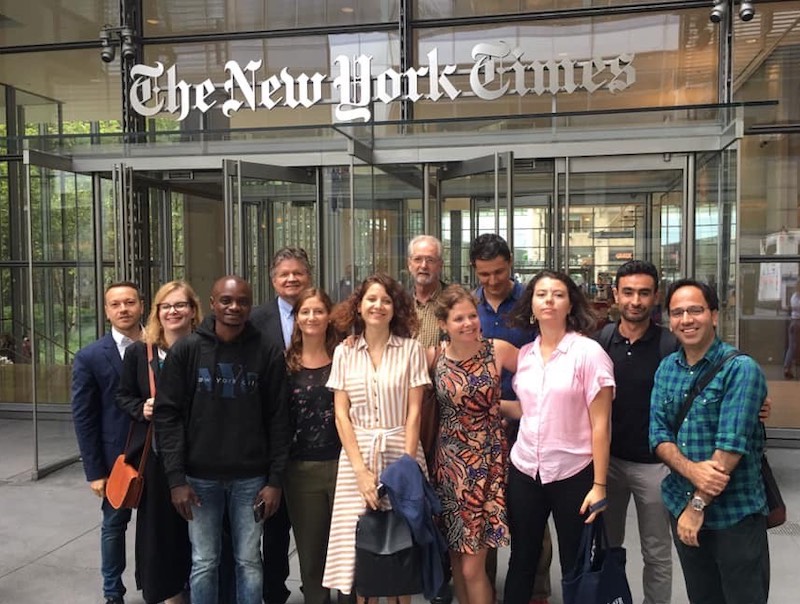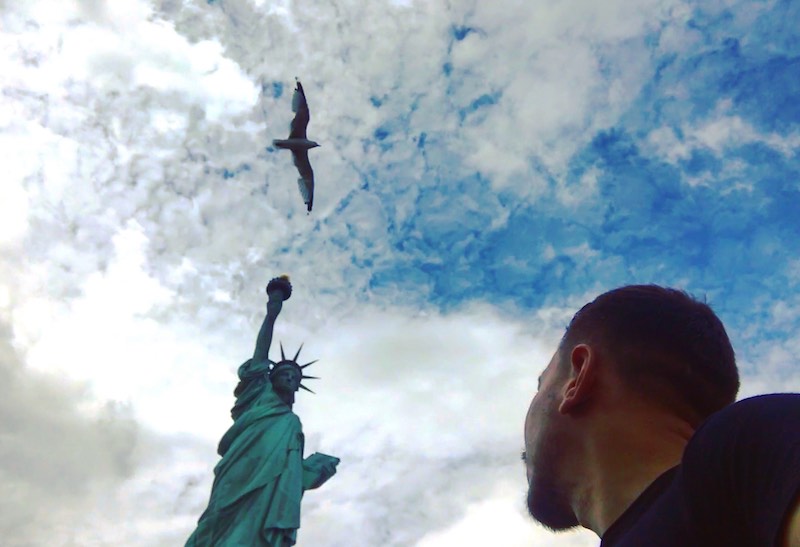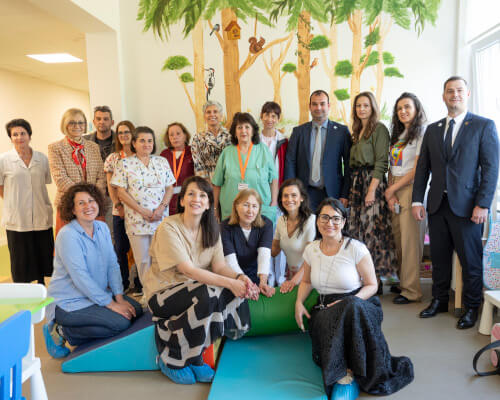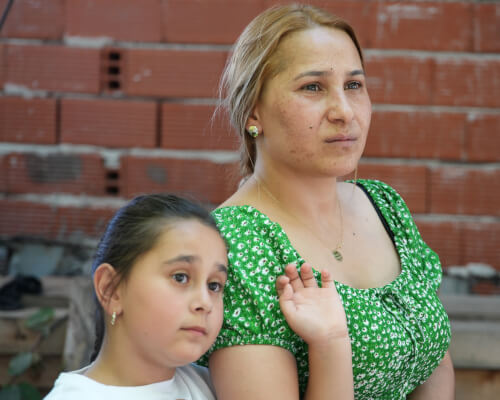
By Rosen Tsvetkov, investigative reporter, bTV
Rosen Tsvetkov is a Bulgarian investigative TV journalist who spent August–October 2019 as an America for Bulgaria/World Press Institute media fellow in the United States. The two-month program provides immersion into the governance, politics, business, media, journalistic ethics, and culture of the United States through a demanding schedule of study, travel, and interviews. In the essay below, Rosen talks about his impressions from the program.
“What meeting was most valuable to you?”
“What was the most interesting place you visited?”
“Did it give you any new ideas for your career?”
These questions have been coming from all sides over the last few weeks. I admit I’m still looking for answers. As I go over my experiences in the United States, I evaluate and reflect on them—and I never stop comparing. Especially now that I am back at work in Bulgaria, after more than two months of learning about American reality.
I began drawing comparisons between journalism here (in Bulgaria) and journalism there (in the United States) as soon as I met the nine other journalists selected to participate in the World Press Institute program. They came from countries all around the world—South Africa, India, Algeria, Belarus, Romania, Hungary, Finland, Uganda, and Uruguay.
The comparisons continued in the newsrooms of some of the biggest, most influential media such as CNN, The New York Times, The Washington Post, and The New Yorker as well as at smaller, local Minnesota media like the Star Tribune, The Ely Echo, and Minnesota Public Radio. I compared our experiences by talking to media professionals and by doing fieldwork alongside fellow journalists. Briefly, I had the opportunity to work at one of Minnesota’s first TV stations, KSTP TV. It owns the world’s first satellite news-gathering truck to enable live broadcasts from anywhere.
Some of my experience at KSTP TV mirrored my work at Bulgarian TV stations. The morning editorial meetings to distribute tasks for the day, the newsroom, the studios, the equipment, and the journalists’ enthusiasm were all very familiar to me. There were significant differences as well: for example, the TV station had its own helicopter to cover breaking news, and it had an investigative team. In Bulgaria, such teams are becoming increasingly rare.
The program also introduced me to investigative journalists who were using the podcast format to present their work. Samara Freemark and Natalie Jablonski produce the investigative podcast In the Dark. They could not come up with any examples of pressure, threats, or censorship in their work. Just because they had never experienced anything like that.
Reporters at ProPublica, an organization focused on investigative journalism, also admitted to working without any pressure. The work of ProPublica is supported by donations, a model of financing that seems inapplicable in Bulgaria, at least for now. One of the founders of ProPublica, Paul Steiger, explained that an investigation could take up to a whole year if necessary. Facts require careful scrutiny, especially in the era of fake news flooding social networks.
At the same time, online journalism in the United States is flourishing. Special attention is paid to Facebook, Twitter, and Instagram users. Whole teams work on media content for posting on social networks.

While Bulgarian newspapers are finding it increasingly difficult to survive against a backdrop of circulation decline and public distrust, US newspapers no longer rely on print runs only. They produce their own video content. “Video is your ticket to engaging young audiences,” an editor at the Star Tribune explained.
At US news organization Axios, the pace is even faster. The Axios website features brief news blasts for quick reading to fit a dynamic lifestyle. Reporter Nicholas Johnston spoke of an accelerating “metabolism” in discussing the changes in news and information consumption.
The Star Tribune newsroom featured a virtual dashboard displaying real-time statistics on the most-read articles. And that was not all: the dashboard also showed competitors’ stats and analyses of readers’ habits.
Another virtual dashboard caught my attention, too. It is located at the very heart of the nation, in Washington, DC, not too far from the White House. The dashboard belongs to the Newseum, a unique institution dedicated to the history of journalism around the world.
The Newseum dashboard informs you that the media environment in Bulgaria is pluralistic. There is partial freedom, but editors and journalists have to consider the political and economic interests of media owners and advertisers.
“News is what somebody, somewhere wants to suppress,” a wall inscription at the Newseum reminds us. This message resonates all over the world—in South Africa, India, and Uruguay, where some of the other participants in the program came from.
The comparisons will continue for a long time. This is one of the most valuable things about the WPI program: it enriches, motivates, and opens our eyes—not only to US reality, but to realities throughout the rest of the world.

